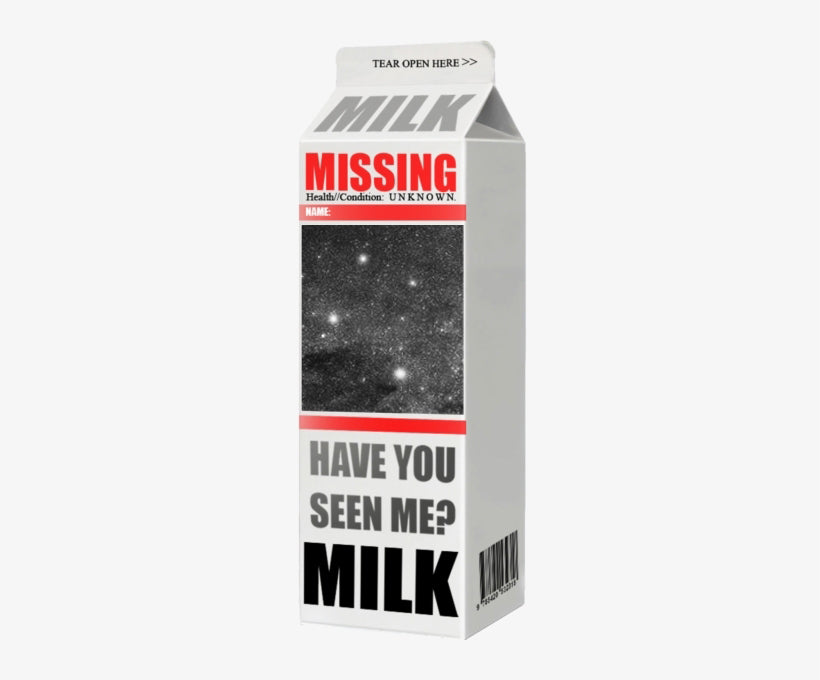
100 Stars Have Astonishingly Disappeared, Baffling Researchers
Share
Somehow, someway, our night sky is changing.
And we don't know why.
Pop culture has us thinking the sky is eternally permanent, like our pets when we were kids (why did you have to die ringo??) After all, we have used the stars as interstellar lighthouses to guide our ships in centuries past and we've made a universe (pun intended) of heroes and villains from patterns in the sky for much longer. But the truth is, we can mythologise the ancient Greek version of The Avengers in the sky, but we have watched with naked eyes and missing the minute details.
Question: what if we haven't watched closely enough?

Alright we get it, we can't all stare art the sky watching every star like an astronomical creche.
Fortunately, a group of astronomers has devised a way to compare 70-year-old surveys with snaps of today's sky. So please, come inside and stop monitoring the stars now. The researchers used software to analyse the 600 million light signatures above us and compared them to skies of the past using data from the US Naval Observatory (USNO) over a period of decades starting in 1949, with observations by the Panoramic Survey Telescope and Rapid Response System (Pan-STARRS) between 2010 and 2014.
The results were cross referenced yet again with other datasets to isolate the most promising anomalies, initially resulting in about 150,000 potential "missing" stars.
Finally, the team filtered through the remaining 24,000 cases one-at-a-time to define which remained a mystery and which could be attributed to errors such as camera malfunctions. And now, the Vanishing and Appearing Sources during a Century of Observations (VASCO) Project has announced their imminent findings after years of laborious work, revealing at least 100 stars of decades past have gone AWOL.
“We have done the best work to remove anything that resembles any artifacts,” says Beatriz Villarroel, coauthor of the recent report and a researcher at the Nordic Institute for Theoretical Physics. The missing lights could represent mere flashes in the night sky or even disappearing stars after reaching their life's end. That is if the researchers get confirmation of the phenomenon. The study explicitly outlines that while their findings represent events understood in nature with a degree of certainty, they are only preliminary findings. Even so, the team look forward to testing more relevant results to astronomy and the ongoing search for extraterrestrial intelligence (SETI).
“VASCO is a project that is both a SETI project and a conventional astrophysics project,” says Villarroel. “Even if we do SETI and have SETI questions, we are also interested in publishing other results that we find along the way.”

Thinking it might just be stars dying out?
Fair call. But when stars die, they tend to be a tad dramatic about it.
The event is called a supernova and its when a star suddenly increases in brightness due to an violent explosion that ejects enough mass to destroy the star. Now, you can imagine these are quite visible. Especially since Chinese astronomers witnessed the first recorded supernova over 1,800 years ago. And they weren't exactly running the Hubble back then.
So by that logic, and comparing the data from the VASCO project, none of their missing stars hit a very noticeable event like a supernova. In fact, quite the contrary: they seem to have mysteriously melted into the pitch of space. Which demands an explanation through investigation, says Villarroel.
The results could indicate a unseen way for stars to die. Or, and bear with us here, some kind of extraterrestrial interference. Either way it sounds fun. “If we should look for aliens,” Villarroel says, “maybe we should actually look for something that would be truly absurd to find.” We like the cut of her jib.
If future findings prove the disappearances as real unexplained events, they will fall into one of two categories: brief flashes captured by happenstance during the original USNO survey or an unknown event. The brief flashes could be due to supernovae as mentioned previously, or more garden variety phenomena like red dwarf flares dimming below light sensitivity, or the afterglow of a gamma ray burst, to name a few. Even red supergiants can pass the supernova phase and collapse immediately into a black hole, albeit quite rarely.
And even so, the odds of this accounting for all 100 events is...
Get ready for a pun...
Astronomical.
And if a lot of stars are mysteriously collapsing into black holes without supernova? We just opened Pandora's box and a new mystery unfurls.

In any case, Villarroel has latched onto the scent of what she hypothesised: an enduring light source switching off suddenly, no matter the cause. Whether its aliens civilisations or some kind of Asgardian space realm switching the lights off, the study - and eventual confirmation - of a missing light source without supernova is key.
“You would have to exclude all-natural things, and then there might also be new natural phenomena that we don’t know about,” she says, which “can be more exciting.”
In addition to continuing to study the hundred or so locations that appear to be missing a light source, the VASCO astronomers next plan on implementing a citizen science project where anybody interested can help them search through the rest of the 150,000 candidates. Villarroel estimates that hundreds more disappearing sources remain to be discovered.
The upcoming Large Synoptic Survey Telescope, which will start scanning the sky once every few nights in late 2022, should speed the hunt for such “transient” objects, but for the VASCO researchers that data is too far off. “We don’t have the patience for waiting,” Villarroel says. "We are too curious."
Are you too curious?
What do you make of these missing stars?
Let us know in comments and share with a friend to help spread ARSE!
#Space_Aus




